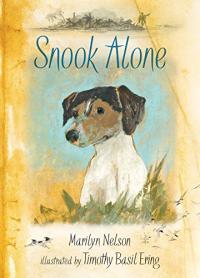
Biography
Timothy Basil Ering grew up on Cape Cod in Massachusetts with water, boats, and fisherman all around him. He remembers vividly when he was able to read a book the whole way through all by himself. That book was Green Eggs and Ham, and Dr. Seuss remains one of his great inspirations, teaching Ering that you can be wildly silly and thoughtful at the same time.
Ering studied at the Art Center College of Design in California, before setting sail as a boatswainsmate aboard the USS Kitty Hawk, travelling to Hawaii, Japan, the Philippines, Australia, Sri Lanka, and Africa. When he returned from his world travels, he decided to return to his art and try to make a living at it.
He illustrated his first children’s book in 2001 (Sad Doggy) which was quickly followed by the enormously successful Newbery winning book, The Tale of Despereaux, originally published with black and white pencil drawings and later in a full-color specially bound edition. The Story of Frog Belly Rat Bone and Necks Out for Adventure gave Ering a chance to write as well as illustrate. All of his picture books reveal an inventive, experimental approach to the process of painting and drawing.
When Ering is not busy creating art and stories for children’s books, you can find him in the studio painting images of fish, seascapes, and landscapes that reflect his life on the New England shore. Ering’s artwork has appeared in magazines, theater sets, private murals, and fine art galleries.
Ering lives with his wife and two kids, Finn and Sawyer, in Plymouth, Massachusetts — still close to the ocean.
Books by this illustrator

Finn Throws a Fit

Mr. and Mrs. God in the Creation Kitchen

Snook Alone




